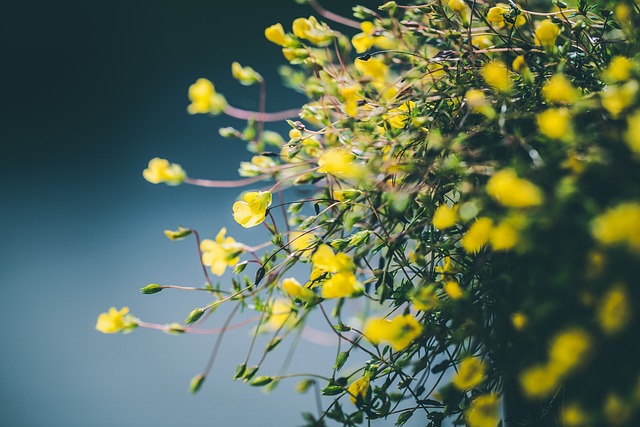Creating a pet-friendly landscape involves prioritizing your furry friend's safety and well-being outdoors by selecting durable materials, avoiding toxic plants, and incorporating designated play areas and shady spots. Key aspects include using non-toxic plants, hardy perennials, fragrant herbs, and pet-safe design elements like stone paths, ensuring ample space to run and exercise, and providing easy access to water. This results in a safe, engaging, and visually appealing outdoor environment for both pets and owners.
Creating a beautiful and functional yard that caters to your pet’s needs is now easier than ever with the right landscaping strategies in place. This article explores comprehensive pet-friendly landscaping solutions, from understanding your furry friend’s unique requirements to designing a safe and engaging outdoor environment. We delve into plant selection with non-toxic options, durable landscape features for longevity, and practical tips for crafting a yard that’s as much a part of the family as your pets. Discover expert advice on transforming your garden into a pet-safe oasis where both you and your four-legged companions can thrive.
- Understanding Pet Needs for Outdoor Spaces
- Creating a Safe and Engaging Pet-Friendly Yard
- Plant Selection: Non-Toxic Options for Pets
- Durable Landscape Features for Longevity and Safety
- Designing a Functional and Pet-Approved Outdoor Environment
Understanding Pet Needs for Outdoor Spaces

Creating a pet-friendly landscape means understanding and prioritizing your furry friend’s needs when designing outdoor spaces. Pets, especially dogs, have specific requirements for play, exploration, and relaxation that should be incorporated into yard design. A safe yard for pets involves selecting durable landscaping materials that withstand enthusiastic digging and chewing while also considering the safety of any non-toxic plants used.
Pet-safe garden design encompasses choosing plant species that are not harmful if ingested by curious cats or dogs. This includes avoiding ornamental grasses, certain flowers, and toxic shrubs often found in traditional landscapes. Instead, opt for pet-friendly options like hardy perennials, fragrant herbs, and non-poisonous trees. When planning a dog-friendly landscape solution, remember to include designated play areas with plenty of space to run and exercise, as well as shady spots to retreat from the sun. A well-designed yard that caters to pets’ natural behaviors will not only keep them happy but also ensure their safety and well-being in an outdoor environment.
Creating a Safe and Engaging Pet-Friendly Yard
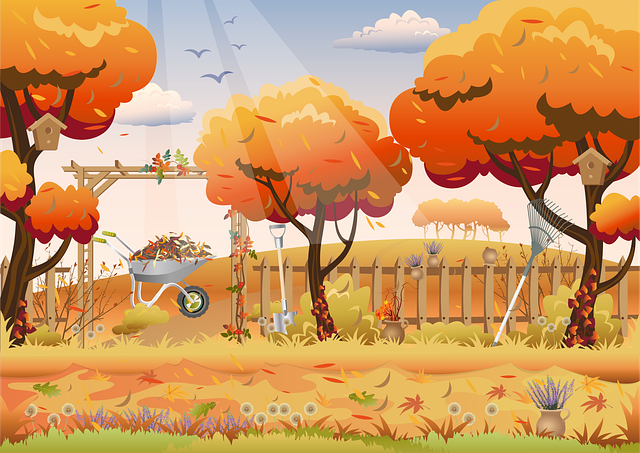
Creating a pet-friendly yard is an excellent way to provide your furry friends with a safe and engaging outdoor space. When designing a yard for pets, prioritize their safety by choosing durable landscaping features that can withstand enthusiastic play. This includes sturdy fences to keep them contained, well-maintained paths or trails, and impact-resistant surfaces like gravel or rubber for play areas. Ensure the overall layout offers multiple resting spots, shaded areas, and easy access to water to meet their fundamental needs.
In terms of garden design, opt for pet-safe plants that are non-toxic to animals. Research which flowers, shrubs, and trees are harmless to your pets, as some common garden varieties can be harmful if ingested. A mix of greenery, vibrant blooms, and perhaps even a small water feature will create an appealing outdoor environment for both you and your beloved pets. By incorporating these elements, you’ll cultivate a pet-friendly yard that’s not only safe but also encourages active play and exploration.
Plant Selection: Non-Toxic Options for Pets
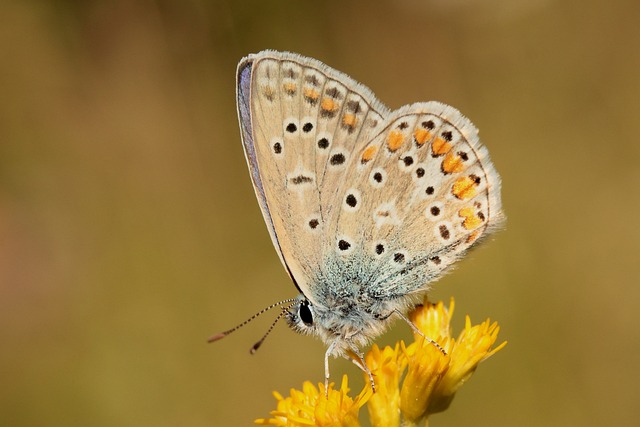
When designing a pet-friendly landscape, selecting non-toxic plants is paramount to ensuring your furry companions can enjoy their outdoor space safely. Many common garden plants can be harmful or even fatal if ingested by pets. Therefore, choosing pet-safe options for your yard design is crucial. Look for plants that are not only non-toxic but also durable and well-suited to your climate and soil conditions.
Researching plant toxicity levels and consulting with a veterinarian or local pet store experts can help you identify suitable varieties. Some popular pet-friendly options include various types of grasses, many herbs like lavender and catnip, as well as certain flowers such as daisies and marigolds. Incorporating these into your garden design creates a beautiful and secure outdoor environment for both you and your pets.
Durable Landscape Features for Longevity and Safety
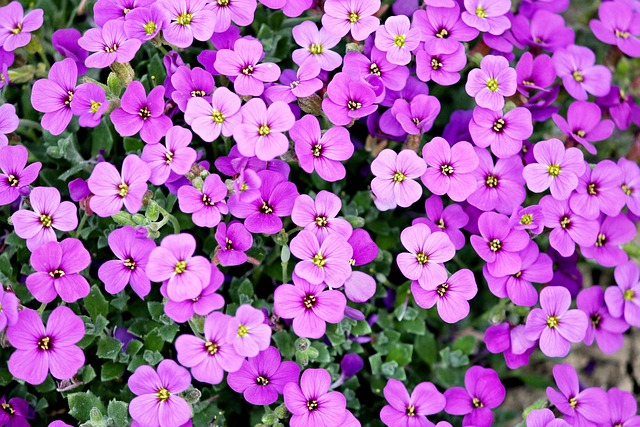
When designing a pet-friendly yard, selecting durable and safe landscape features is paramount. This includes choosing non-toxic plants that won’t harm your furry friends if they decide to take a bite or roll around in them. Opt for pet-safe garden design elements such as stone paths, raised beds, and natural materials like wood chips or gravel for play areas. These options not only endure the wear and tear caused by pets but also provide a comfortable and secure environment for them to explore.
Durable landscaping for pets goes beyond just safety; it ensures longevity in your yard design. Consider structures that can withstand pet activity, such as sturdy fences, secure gates, and well-built outdoor enclosures. Incorporating these pet-friendly yard design elements allows you to create a functional and inviting space where both you and your pets can enjoy quality time together, free from potential hazards.
Designing a Functional and Pet-Approved Outdoor Environment
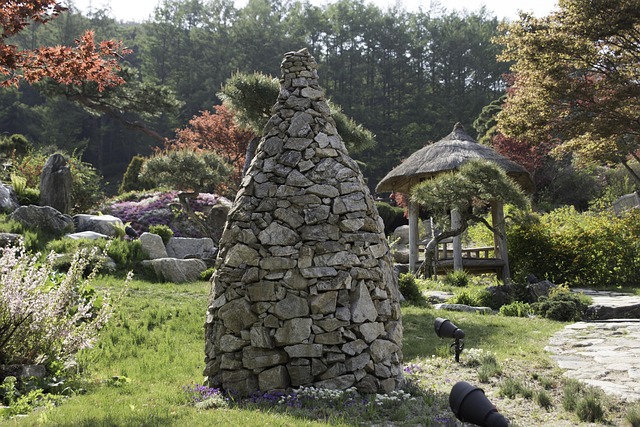
When designing an outdoor space that caters to both aesthetics and your pet’s well-being, functionality is key. A pet-friendly yard should offer a safe haven for animals to play, explore, and relax without encountering hazardous elements. Incorporate durable landscaping materials like stone paths, sturdy plants, and non-toxic flowers to ensure your garden remains a secure area for pets. Consider the activities your pets enjoy; dogs may require ample space for running and digging, while cats might appreciate elevated perches and hiding spots among foliage.
A well-planned pet-friendly garden design should balance your aesthetic preferences with your furry companions’ needs. Opt for plant varieties that are known to be pet-safe, avoiding toxic species that could cause distress or even poisoning. By thoughtfully integrating these elements, you’ll create a beautiful and functional outdoor space that caters to both your needs and those of your beloved pets.
Creating a pet-friendly landscape goes beyond aesthetics; it’s about ensuring a safe and engaging outdoor environment that caters to your furry friend’s needs. By understanding their requirements, selecting non-toxic plants, and incorporating durable features, you can design a yard that not only enhances your home’s beauty but also provides a secure haven for your pets to play and thrive. Embrace these principles of pet-safe garden design, and you’ll cultivate a lush oasis where both you and your beloved companions can enjoy quality time together.
